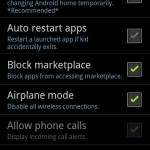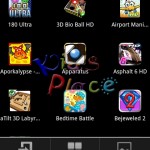Android has had VPN support for donkey’s years but I could never get it working. I tried pptpd and xl2tpd but pptpd didn’t work (and has security holes) or the configuration is daunting and lengthy when all I want is a simple proxy.
There’s also HTTP proxy support built into Android. It’s exposed in Samsung and other ROMs at Settings->Wireless and Network->Wi-Fi Settings, Advanced. Apparently this app sets things up correctly too. I’m not sure if it’ll do authentication however unless you add the username:password in the hostname. I also don’t want to install Squid on my public internet server!
So, the holy grail of proxying would be doing so through ssh. Nothing else to install on my server and I get an encrypted tunnel through the internet and out of Ireland which might be a good thing to protect my privacy from the prying eyes of the Irish Government. A far more mundane reason is the security of my data from others on a public wifi network. (Aside, on what will the record companies blame the falling numbers of CDs sold when the Irish version of SOPA is passed?)
The good news is that you can now create an ssh tunnel from your Android device. The bad news is that it has to be rooted to make the most of it. Go grab the SSH Tunnel app and you’ll be sending data through your remote host in no time. There’s also a beta version that uses an OpenSSH native binary rather than a Java implementation. I haven’t tried that yet, the stable version worked fine for me.
You can stream Netflix through it, and browse the net, post to your blog or whatever else takes your fancy. All through a secure tunnel to a remote server.
In case you’re interested, it’s simplicity itself to do the same thing on Linux or Mac computers using the installed ssh client. On Windows just use Putty!






